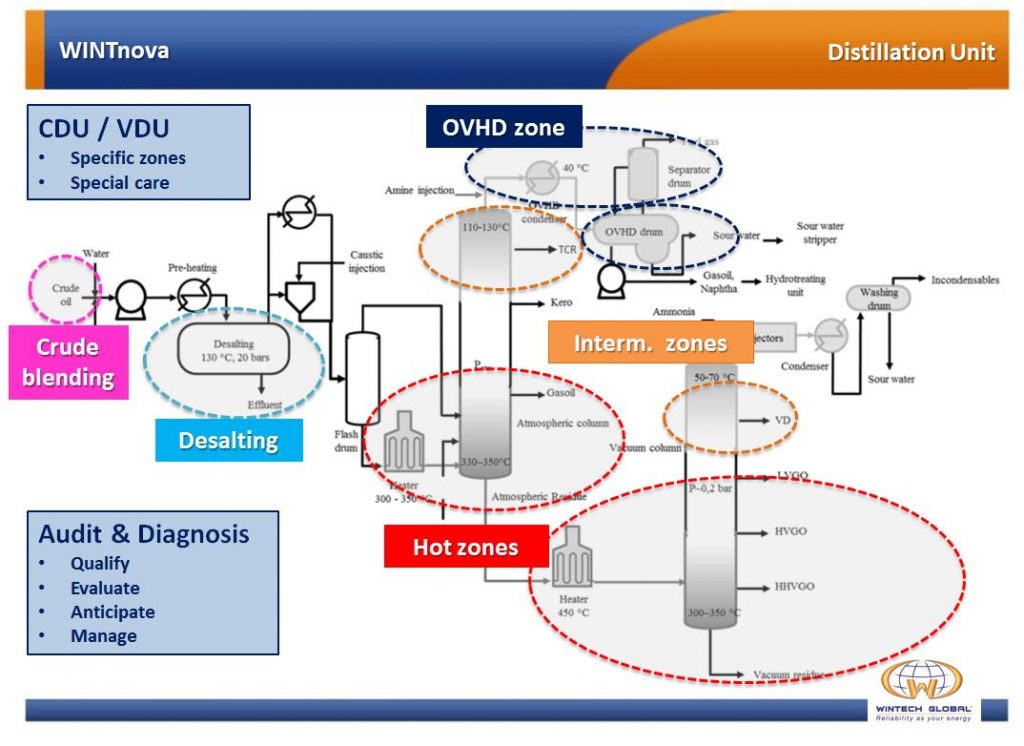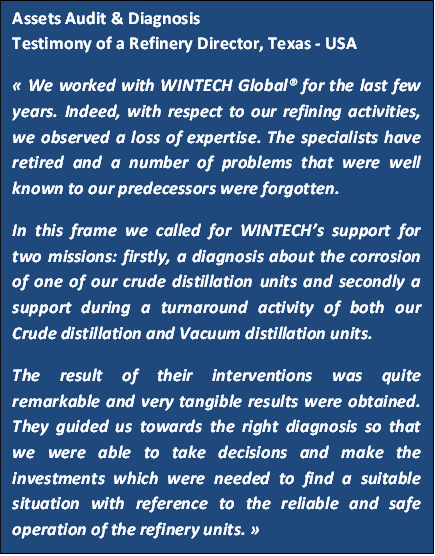Posted on 5 September 2017
Less expensive crudes: YES, but not at any price!
The processing of crude oils which are now called “opportunity crudes”, given the economic interest they represent, can be a source of equipment damage in refineries. These crude oils typically contain contaminants like inorganic salts, sulfur components and naphthenic acids, often at high concentrations correlated with high viscosity and density. Due to the challenging physical properties and higher concentration of these contaminants, processing these feeds can cause technical issues, mainly in terms of equipment integrity.
Preserving the industrial heritage

All these issues have been extensively reported by the oil community through a multitude of articles dealing with historical cases of degradation (ex. CDU column overhead failures) and those relating to the processing of High Acid Crudes (e.g. VDU high temperature zone).
The refiners are aware of the economic interest of these acid crudes, but also of the risks of corrosion damages associated with their processing. They manage the situation by limiting the acidity of the processed crudes (by blending), by costly metallurgical upgrading or by using corrosion inhibitors (sulfur or phosphorus based chemicals, or a mixture of both).
However, all these solutions have limitations linked either to a high and often unacceptable implementation cost or to adverse collateral effects (incompatibility of crudes to be blended, accelerated corrosion, fouling of the exchangers, plugging of filters, etc.).
 Guaranteeing safe and sustainable processing
Guaranteeing safe and sustainable processing
Refiners must implement appropriate solutions to counter the negative effects of these acid oils and avoid at all costs jeopardizing the safety of their sites.
Beyond the economic losses that could be generated by an unplanned shutdown (for a 150,000 bbl/day refinery, daily operating losses may be of $ 1 million), the protection of people and environment against industrial risks remains a fundamental issue.
Companies must therefore find the best compromise between optimizing the profitability of their sites and controlling the safety and reliability of their equipment.
Within the frame of opportunity crudes leveraging to increase their profits, the refiners shall ensure a continuous assessment of Asset Condition and Integrity Management.
